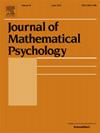A characterization of two-agent Pareto representable orderings
IF 2.2
4区 心理学
Q2 MATHEMATICS, INTERDISCIPLINARY APPLICATIONS
引用次数: 0
Abstract
Partial orders defined on a nonempty set admitting a two-agent Pareto representation are characterized. The characterization is based upon the fulfillment of two axioms. The first one entails the existence, for any point , of a very particular decomposition of the points which are incomparable to . The second one encodes a separability condition. Our approach is then applied to show that if the cardinality of is, at most, 5, then a two-agent Pareto representation always exists whereas this need not be the case otherwise. The connection with the concept of the dimension of a poset is also discussed. Certain examples are also presented that illustrate the scope of our tools.
双主体Pareto可表征排序的表征
定义在允许双代理Pareto表示的非空集X上的偏序。这种描述是基于两个公理的实现。第一个定理证明了对于任意点x∈x,存在一个与x不能比较的点的特殊分解。第二个定理包含了一个可分性条件。然后应用我们的方法来证明,如果X的基数最多为5,那么两个代理的帕累托表示总是存在的,反之则不必如此。文中还讨论了与偏序集维数概念的联系。还提供了一些示例来说明我们的工具的范围。
本文章由计算机程序翻译,如有差异,请以英文原文为准。
求助全文
约1分钟内获得全文
求助全文
来源期刊

Journal of Mathematical Psychology
医学-数学跨学科应用
CiteScore
3.70
自引率
11.10%
发文量
37
审稿时长
20.2 weeks
期刊介绍:
The Journal of Mathematical Psychology includes articles, monographs and reviews, notes and commentaries, and book reviews in all areas of mathematical psychology. Empirical and theoretical contributions are equally welcome.
Areas of special interest include, but are not limited to, fundamental measurement and psychological process models, such as those based upon neural network or information processing concepts. A partial listing of substantive areas covered include sensation and perception, psychophysics, learning and memory, problem solving, judgment and decision-making, and motivation.
The Journal of Mathematical Psychology is affiliated with the Society for Mathematical Psychology.
Research Areas include:
• Models for sensation and perception, learning, memory and thinking
• Fundamental measurement and scaling
• Decision making
• Neural modeling and networks
• Psychophysics and signal detection
• Neuropsychological theories
• Psycholinguistics
• Motivational dynamics
• Animal behavior
• Psychometric theory
 求助内容:
求助内容: 应助结果提醒方式:
应助结果提醒方式:


